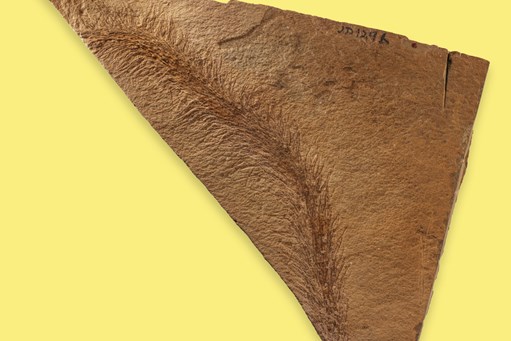2. Baragwanathia
First giant of the plant world
The fossil plant Baragwanathia was one of the first plants adapted to living outside water. When Baragwanathia was named by the pioneering female scientist Dr Isobel Cookson, it was considered the world’s oldest land plant.
By transporting water and nutrients inside its strong stems, Baragwanathia was able to survive sunlight and open air. Small, simple leaves covered its stems, which were over a metre long. Most other plants at this time were only a few centimetres tall.
Baragwanathia plants were washed into the sea which covered most of Victoria during the early Devonian and today we find their fossils preserved in marine sedimentary rocks. They still show even microscopic details of the plant’s anatomy. This is partly because bacteria that break down such tough plant tissue were only beginning to evolve.
About the plant
|
How do you say its name? |
Barra-gwuh-NAY-thee-A |
|
How big? |
About a metre long |
|
When did it live? |
Around 400 million years ago |
Fossil facts
|
Significant Victorian location |
Yea, central Victoria; and Thomson River, West Gippsland |
|
Traditional Owners |
|
|
Who found it? |
William Baragwanath and others |
|
Who described and named it? |
Australian palaeontologist Dr Isobel Cookson (1893-1973) and British botanist Prof. W.H. Lang (1874-1960) |
|
What is special about it? |
Baragwanathia is one of the world’s oldest land plants. |
|
Significance of the fossil |
The first Baragwanathia fossils were found in Victoria. |
|
Full name and meaning |
It was named after geologist William Baragwanath (1878–1966), who found its first fossils. |








